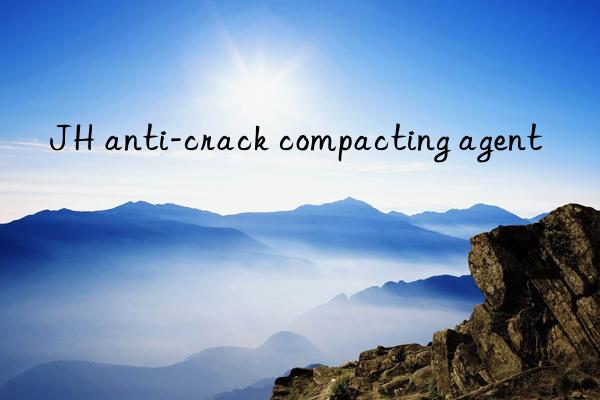
Anti-cracking compacting agent is a new generation of special concrete material, which is compounded by a variety of inorganic salts rich in cement activity and strengthening components through scientific and technical processes. Making full use of the physical and chemical change mechanisms during the solidification process of cement mortar and concrete, chemically synthesized powders can prevent cracking and cracking from both physical and chemical aspects, which can significantly improve the compactness of cement mortar and concrete. Its technical effect is to significantly improve the impermeability, reduce shrinkage, and prevent cracking. It can effectively prevent the penetration of water molecules, significantly improve the strength of concrete, and improve the durability of concrete.
The anti-cracking compacting agent is easily soluble in water and evenly distributed in the concrete after stirring. It chemically reacts with cement hydration precipitates to form crystals and gels, which reduces the volume shrinkage of concrete. Improves the crack resistance of concrete, especially the crack resistance of large-volume concrete. At the same time, during the growth process, the gel fills and blocks the pores in the cement stone, cutting off the connection of capillary pipes, making the porosity inside the concrete smaller, and improving the compactness and impermeability.
1. Product Features
1. Improve the crack resistance, impermeability and durability of cement products and improve long-term strength.
2. It has the functions of crack resistance, density and shrinkage compensation.
3. Water-resistant, oil-resistant, alkali-resistant, acid-resistant, high-temperature-resistant, and low-temperature-resistant.
4. No anti-corrosion or rust on steel bars.
5. Non-toxic, odorless, pollution-free, green and environmentally friendly.
II. Scope of application
1. Key projects such as railway bridges, tunnels, overpasses, industrial plants, community civil buildings, water storage tanks, water towers, roads, airport buildings, etc.
2. Crack-resistant and waterproof concrete used in tunnel linings, culvert frame structures, buildings and underground waterproofing projects.
3. Concrete caps, bridge piers, slag-free track cast-in-situ concrete track bed slabs, concrete bases and other projects.
4. Waterproofing projects for roofs, floors, walls, kitchens, bathrooms, basements and other industrial and civil buildings.
5. Moisture-proof and waterproof projects for various pools, swimming pools, underground warehouses, civil air defense projects, subways, tunnels and other buildings.
3. Technical performance
1. Technical standard: JC474-2008;
2. Low shrinkage: the mixture will not shrink and settle, and the anti-cracking agent It can absorb internal stress and improve crack resistance;
3. Crack resistance: Anti-crack density agent is easily dispersed in the mortar to form a three-dimensional space structure, which effectively changes the causes of excessive drying of concrete and insufficient moisture. Poor hardening, cracking and other phenomena;
4. Impermeability: When used to configure waterproof and impermeable concrete, the impermeability grade can be improved to S8-18 or above;
5. Operability : Because the anti-crack densification agent has a slump-preserving effect, it reduces the frictional resistance of pumped concrete; anti-crack densification can increase the plasticity of concrete, improve construction operability, and improve work efficiency;
6. Density: can Reducing the internal porosity of concrete by more than 40% can effectively reduce the number of capillary pores and macropores; dosage: 4 to 6%;
IV. Construction technology
1. Direct Add it to the mortar or concrete mixer, and the mixing time is 30 to 60 seconds longer than normal mixing, counting 2 and a half minutes or 3 minutes. If manual mixing is required, the mixture needs to be mixed evenly;
2. Concrete mix ratio design and ordinary concrete The same, but the cement dosage should not be less than 300kg/m3;
3. Choose fresh but not expired wafer salt or ordinary wafer salt cement. The cement has good activity and stability. The cement label is generally P. 032.5 or P.042.5;
4. The sand and quartz grades are good, the mud content is low and in compliance with relevant regulations;
5. The concrete must be vibrated densely, without slipping or vibrating. Strong vibration, concrete and mortar should be compacted and compacted. Fine stone concrete should be used in the house, and small flat plates should be vibrated and compacted.
6. Mortar or concrete should be covered with wet straw bags in time to strengthen moist maintenance. , the general curing time is no less than 7 to 14 days, and concrete curing agents can also be used for curing.
5. Packaging and storage
Packed in composite kraft paper bags, 40kg/bag, with a shelf life of 6 months.
Must be stored in a dry and ventilated room, with the packaging bag sealed and protected from moisture and freezing.
</p

 微信扫一扫打赏
微信扫一扫打赏

